The word "decal" is short for "decalcomania" (from the French, "décalcomanie"; "décalquer" is the French verb 'to trace'). It originally referred to the craze for plastering surfaces with waterslide transfers, but nowadays more commonly (albeit incorrectly) a decal means a sticker. Needless to say, the décalcomanies on this page are NOT stickers.
The images shown here are from my personal collection; I didn't set out to collect any waterslides — it just happened while I wasn't paying attention. They're just the tip of the iceberg, & there are plenty more just as good if anyone would like to request another page or two. Or seventy-eight.

Above: apply these bullet holes to the windows & bodywork of your car for that authentic Secret Agent look.
Below: although described as Brigitte Bardot, these are clearly somewhat older in origin than she is. On the left, the protective tissue has been left in place; on the right, it has been removed. Many of the transfers on this page would have had protective tissues; with age, these tissues may end up doing more harm than good. At any rate, any other tissues have been removed for scanning.
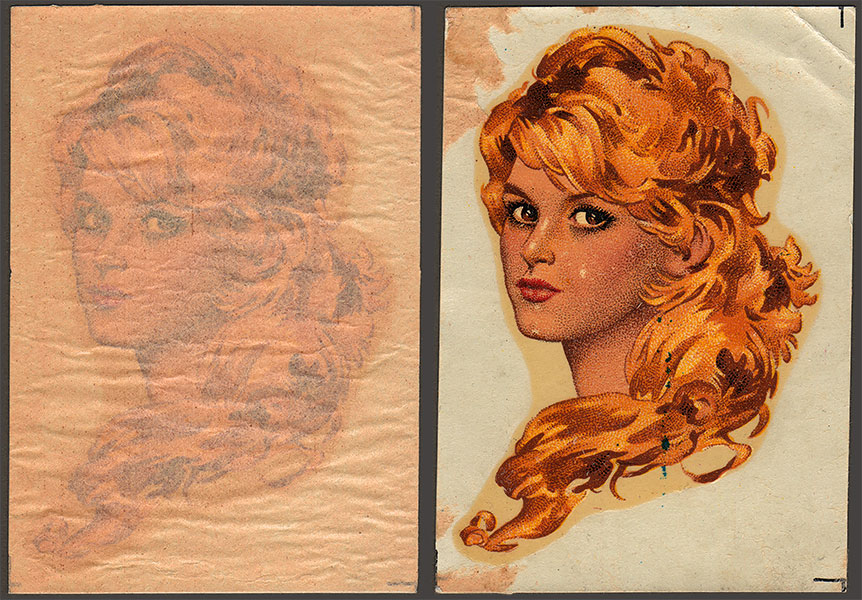
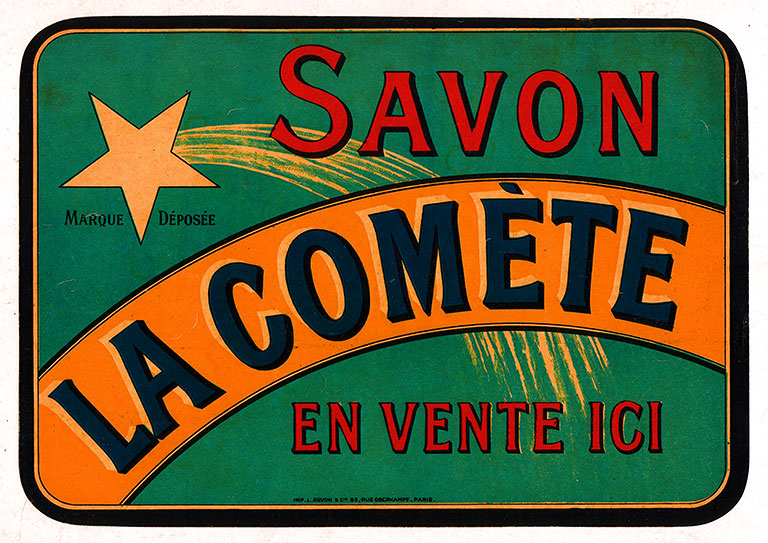
Above: a very large, poster-sized (30cm) display transfer. This would have been applied to a shop window or a glass door; nowadays, you are as likely to find something like this on a mirror purely as decoration (I don't think this brand is still for sale, a hundred years on).
Below: Japanese "Transfer Pictures", produced circa 1970 (as you can tell from the figures in the left-most sheets, including Keir Dullea in "2001: a Space Oddyssey", Steve McQueen in "Bullitt", etc.). If it hadn't been for that sheet, these would have been very hard to date…
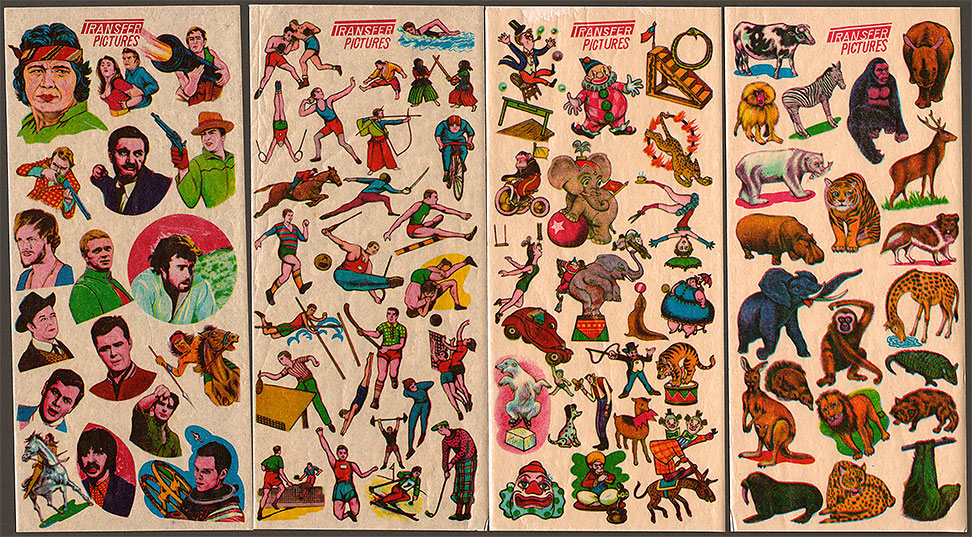
"New Transferpicture Printed in Germany". There is nothing to indicate that this is any later than the 1860s, which was the period of the lithography boom & the date of the earliest mass-produced transfers. So I'm going with that date. They're certainly very interesting & colourful!
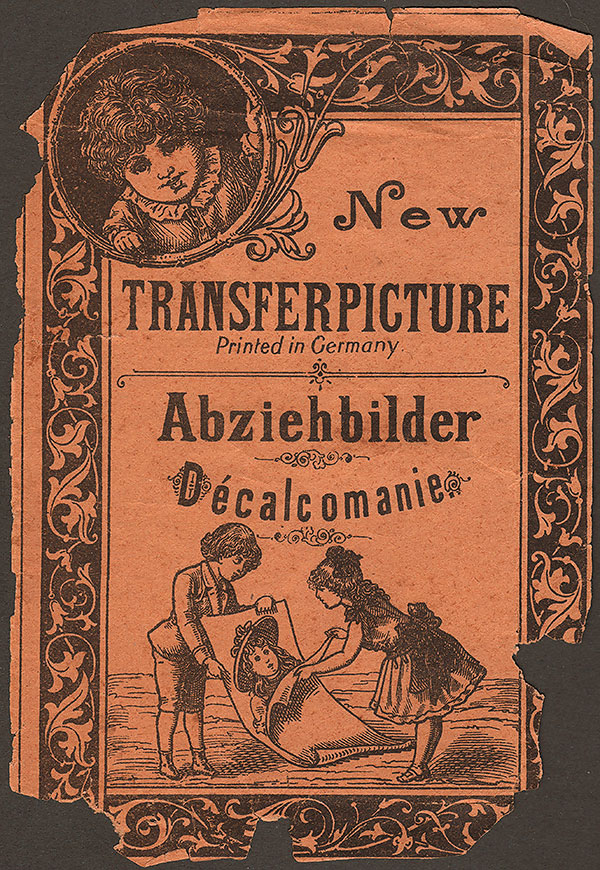

"Décalcomanie Francaise Edition Publitout Grenoble; collection de sujets variés". The subject of this particular collection suggests a date in the early 1920s, if not during the First World War itself.
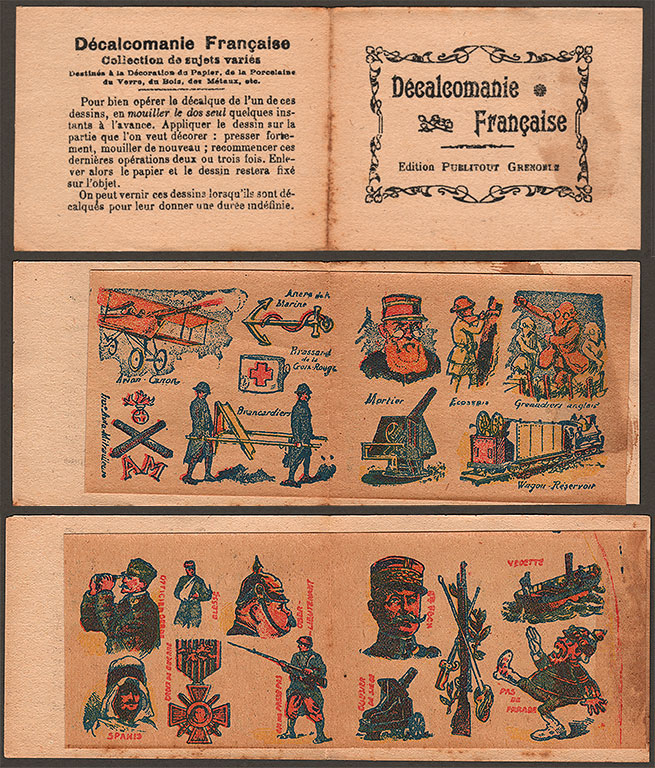
Father Tuck (Raphael Tuck & Sons. Ltd.) produced a great many printed children's toys, including a large number of transfers. This is Series 53 of the "Busy Bees"; the titles of Series 51 to 59 are listed on the back. "Busy Bee" is, of course, a title later associated with Letraset's first transfers for children.
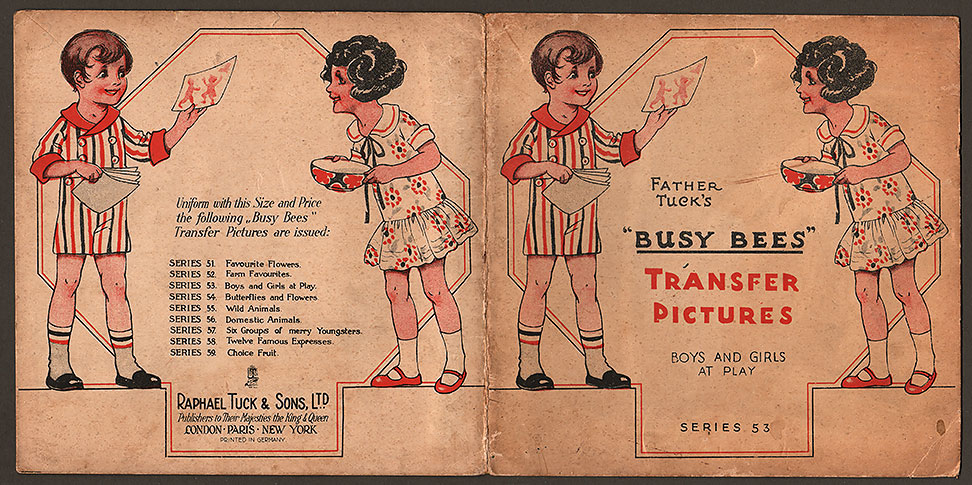

"Float picture on top of the water, taking care not to allow the picture side to get wet. When tiny blisters appear on the picture, it is quite ready for transferring. Take out carefully and place it colour side downwards on the object and in the position you wish it to appear. Dab and press very gently with a soft cloth or blotting paper. Then slide smoothly from left to right when the paper will come away and the picture remain.
"In a general way cold water answers the purpose, but in districts where the water is not sufficiently soft, it is desirable to boil it in the first instance and use warm water instead of cold."
More Tuck's transfers further down the page!
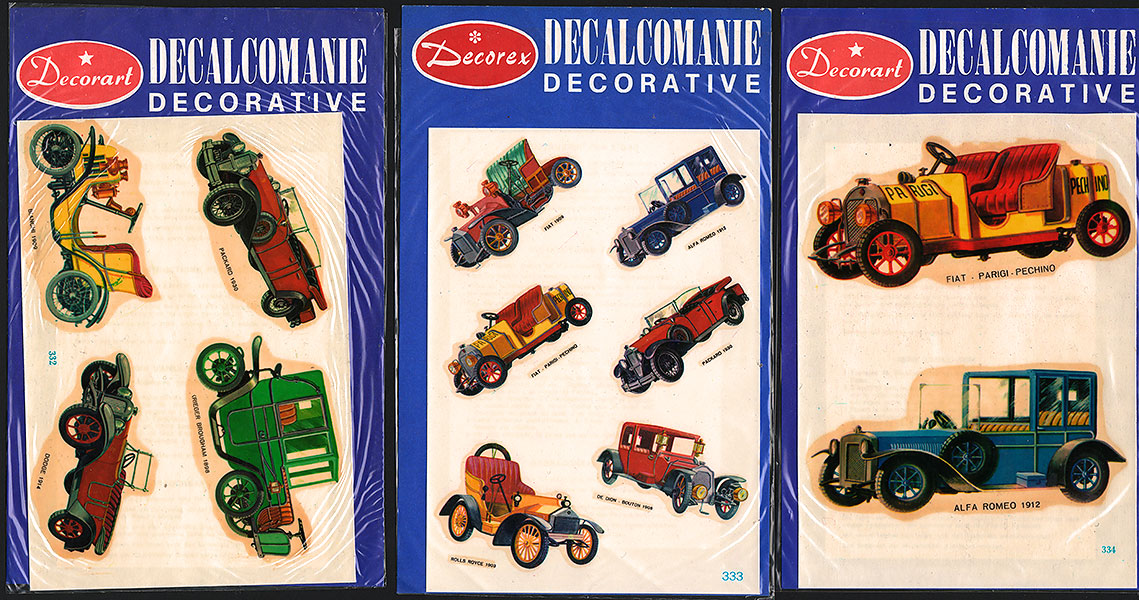
Here are a few Decorart Décalcomanies, both in their packets & then out of them. This is perhaps the most popular format for waterslide transfers towards the end of the period when they were widely available. The subject of vintage cars was also a favourite.
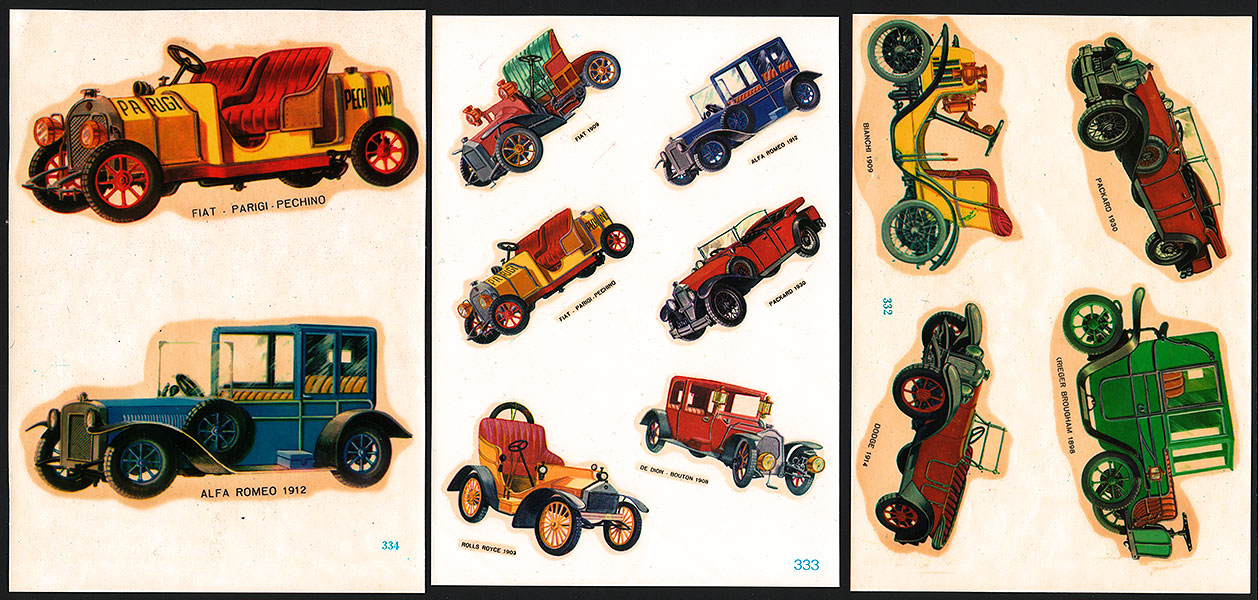
Another favourite subject was, of course, the pin-up. These were particularly aimed at moped & motorcycle owners. I could show you things to make your hair stand on end, but instead I thought this sheet made for a suitable & elegantly simple example of the genre.
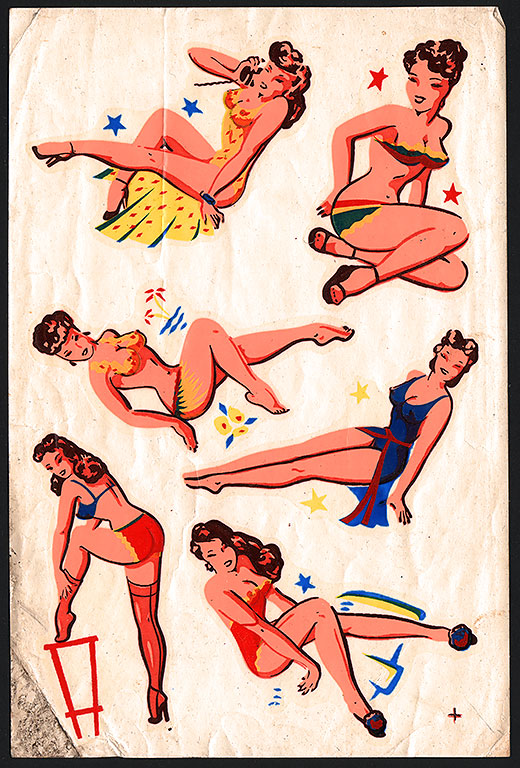
Time for more Tuck's. These Magic Transfer Pictures (probably from the 1950s, although quite possibly twenty or even thirty years older) are indeed a novelty, because the monochrome picture that appears on the surface dissolves away, leaving you with an entirely different image — in colour. I doubt that this experiment was ever repeated, by Tuck's or by anyone else… I haven't dared to actually try any of these out yet, for fear of losing the surface images & spoiling the set, but as soon as I do I will let you see the results.
The little cardboard packet they came in is certainly a tempting size & shape.
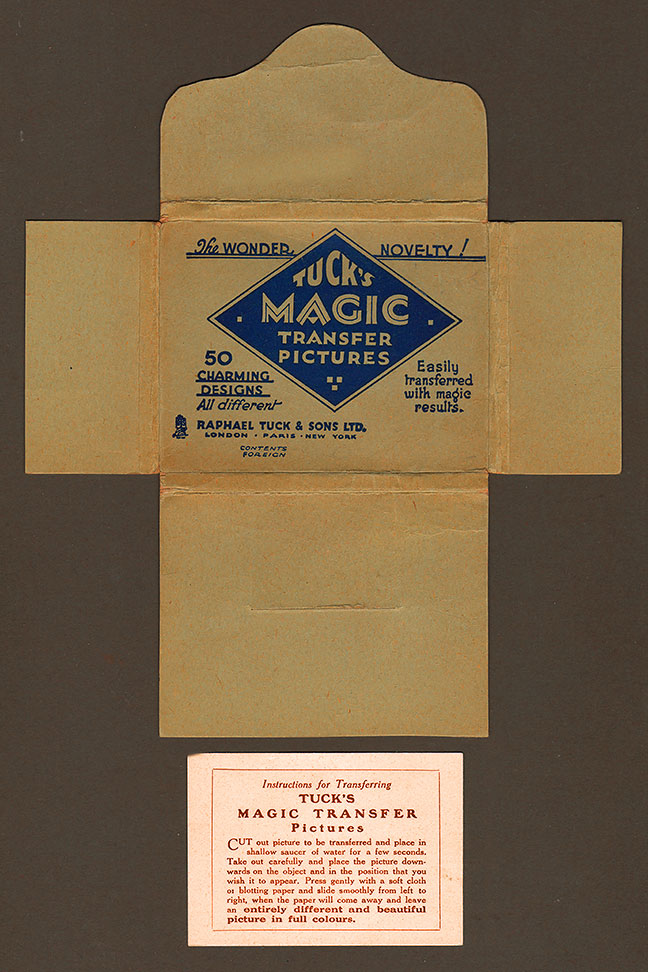
"Cut out picture to be transferred and place in shallow saucer of water for a few seconds. Take out carefully and place the picture downwards on the object and in the position that you wish it to appear. Press gently with a soft cloth or blotting paper and slide smoothly from left to right, when the paper will come away and leave an entirely different and beautiful picture in full colours."
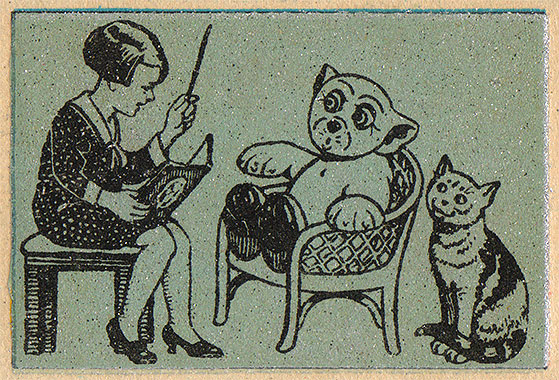
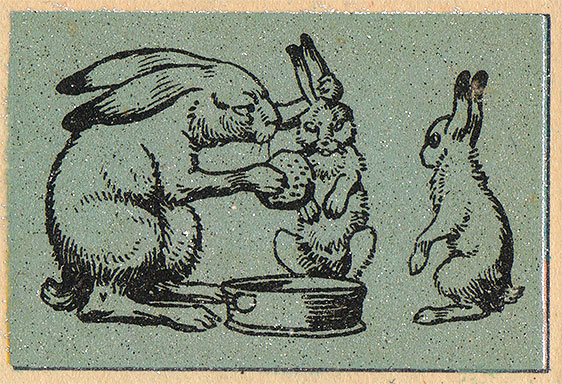
Here are all fifty charming designs:
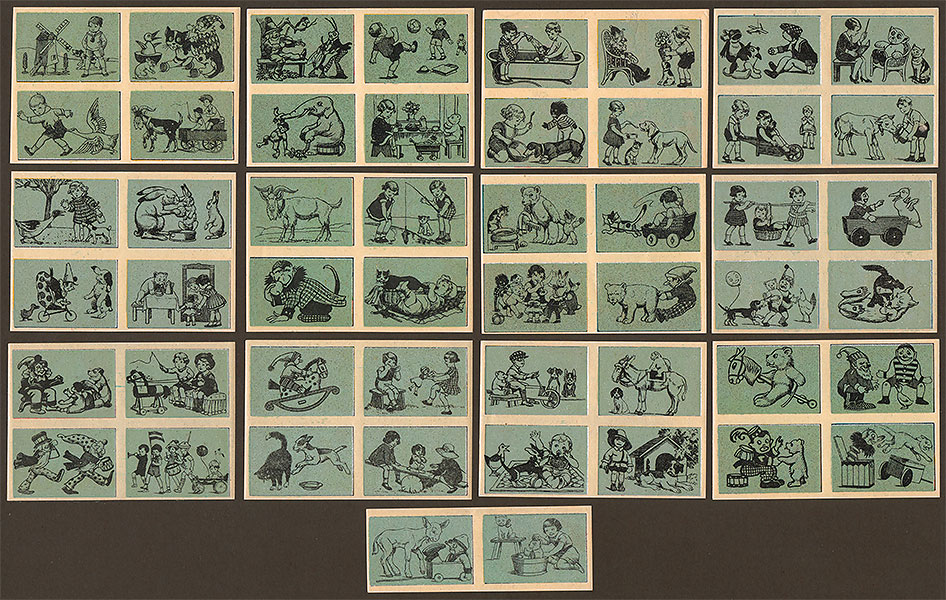
To round off this page, here is a promotion from 1968 for the Jungle Book, by "La Vache Qui Rit". This is still quite sought-after by collectors. I kept coming across it while searching for the Letraset "Conquête De L'Espace" La Vache Qui Rit promotion, & eventually I couldn't resist getting an example.
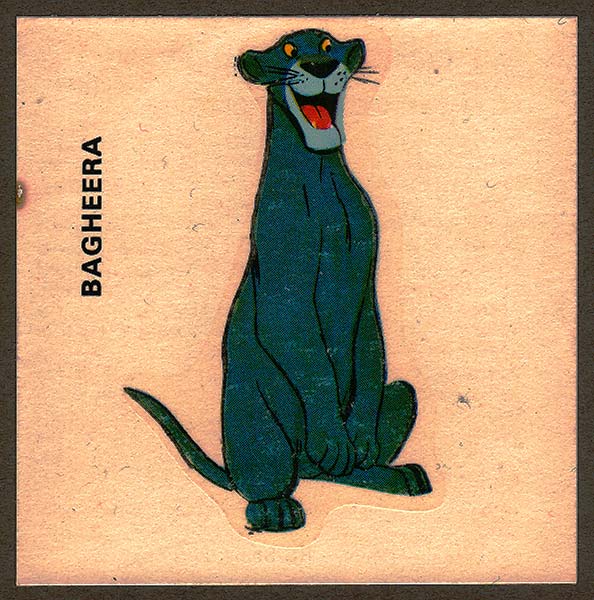
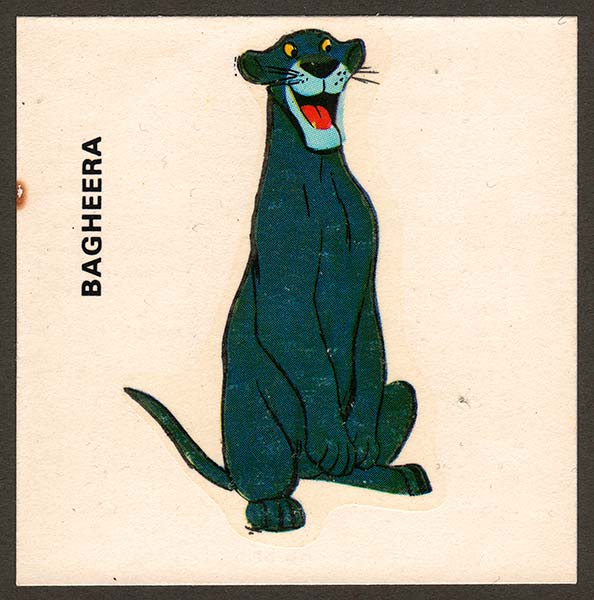
I've 'enhanced' the first version of this scan in order to make the halo more clearly visible.
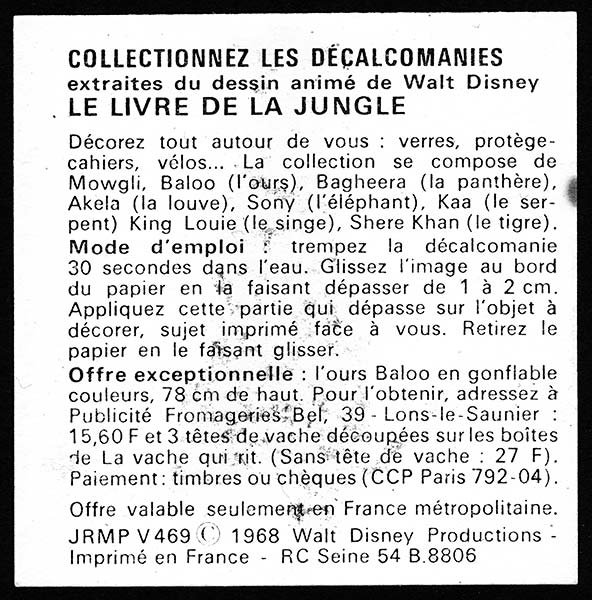
You can find out more about this promotion on our page "Le Livre de la Jungle".
Detailed instructions on applying décalcomanies can be found here: "How to Apply a Waterslide Model Kit Transfer".
Here are the links to those "What are Transfers?" article pages again in full:
- "What are Transfers?" (Main Page) ↑
- Temporary Tattoos, including "How to Apply a Vintage 1960s Temporary Tattoo" →
- How to Apply a Waterslide Model Kit Transfer →
- Waterslide Transfers Applied to Drinking Glasses; plus Golly Transfers →
- The Letraset Type Lettering System →
- How to Apply Vintage 1959 Letraset Waterslide Lettering →
- Letraset's dry rub-down "Instant Lettering" →
- Heat Transfers, including "How to Apply a Vintage 1970s Iron-On Transfer" →
- How to Apply Letraset Dry Rub-Down Transfers →
- How Dry Rub-Down Transfers Work →
- Topps Rub-Offs, Hasbro Rub-Ons, & Trans-Action →
- Some Lovely Décalcomanies (this page; see above ↑)
- How to Apply a Sticker (& other Sticker treats) →
- Stick'N'Lift →